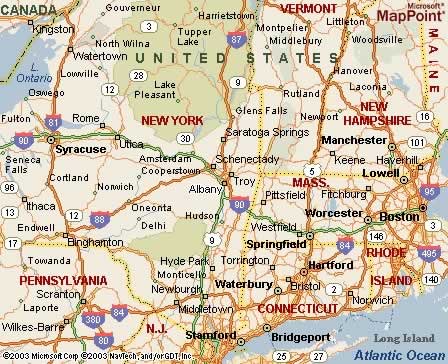|
|
Canku Ota |
|
|
(Many Paths) |
||
|
An Online Newsletter Celebrating Native America |
||
|
December 13, 2003 - Issue 102 |
||
|
|
||
|
Mohawks set to reclaim prized piece of history |
||
|
by RICK KARLIN, Staff writer
- Albany (New York) Times Union
|
||
|
credits: Mohawk
Wolf Belt (Reproduction)
Julius Cool, Mohawk, Akwesasne, May 16, 1927- June 9, 1999 |
|
Albany--
Museum officials recommend that state return rare, 200-year-old
wampum belt to tribe. Researchers and officials at the museum are recommending the state Board of Regents approve the return under federal repatriation laws, which say that Native American groups have the right to reclaim significant artifacts from places such as museums. The Regents are expected to approve the request during their meeting later this week. While the "Mohawk Wampum Belt," has been in the museum's collection since 1898, the three main governing bodies representing the Mohawk people just last month agreed to request the object's return, said Sheree Bonaparte, historical preservation officer for the St. Regis Mohawks, who live on a reservation known to the tribe as Akwesasne that straddles the border of New York and Canada. "I think everybody recognized it belongs here," said Bonaparte. "It's a written record of the community itself." Wampum -- tiny decorative beads fashioned from the distinctive quahog clam shells of Long Island -- hold deep spiritual and historic significance for Mohawks and other members of the old Iroquois Confederacy. They provide visual cues for events in tribal history, commemorate treaties and play a role in various ceremonies. Wampum beads also served as currency among both Native Americans and early European settlers, noted George Hamell, an ethnology collections manager for the State Museum. The precise meaning of the Mohawk belt, which depicts a pair of men and wolves looking outward from the center of the object, is unclear, said Hamell and Bonaparte. Hamell estimates it was made between 1760 and 1780. It was donated to the museum in 1898 by Harriet Maxwell Converse, a wealthy New York City woman who wanted to preserve such items for posterity at a time when they were rapidly disappearing, said Hamell. "At this point, the tribe would like it back," Hamell added, explaining that wampum belts have been returned to other Iroquois tribes since repatriation laws went into effect in 1990. Two governing entities at Akwesasne, the Mohawk Nation of Council Chiefs and the Mohawk Council, have been seeking the belt's return for several years, but the third, the St. Regis Mohawk Tribe, also had to agree to the request since that organization has federal recognition as a Native American tribe, Hamell explained. It wasn't immediately clear why, after several years of discussion, the St. Regis agreed to seek repatriation in November. The three entities, though, have sometimes been at odds over a variety of issues such as the construction of casinos on sovereign Indian territory. Several other tribes, including the Oneidas, have had wampum belts returned in recent years from private collectors as well as museums. The belts are priceless and would likely be worth hundreds of thousands of dollars, although they would almost certainly have to be sold on the black market, Hamell said. The Mohawk wolf belt had at one time been on display but was locked away in 1971, when Native Americans began seeking their return. "It was quite tense at the time," said Hamell. |
|
|
www.expedia.com |
|
|
||
|
|
||
| Canku Ota is a free Newsletter celebrating Native America, its traditions and accomplishments . We do not provide subscriber or visitor names to anyone. Some articles presented in Canku Ota may contain copyright material. We have received appropriate permissions for republishing any articles. Material appearing here is distributed without profit or monetary gain to those who have expressed an interest. This is in accordance with Title 17 U.S.C. Section 107. | ||
|
Canku Ota is a copyright © 2000, 2001, 2002, 2003 of Vicki Lockard and Paul Barry. |
||
 |
 |
|
|
The "Canku Ota - A Newsletter Celebrating Native America" web site and its design is the |
||
|
Copyright © 1999, 2000, 2001, 2002, 2003 of Paul C. Barry. |
||
|
All Rights Reserved. |
||

